

Max Davies
2025 Lexus NX450h+ F Sport review
20 Days Ago
Kia's strong-selling Sportage GT-Line is ready for families and young couples. This affordable flagship medium SUV starts from under $60k.
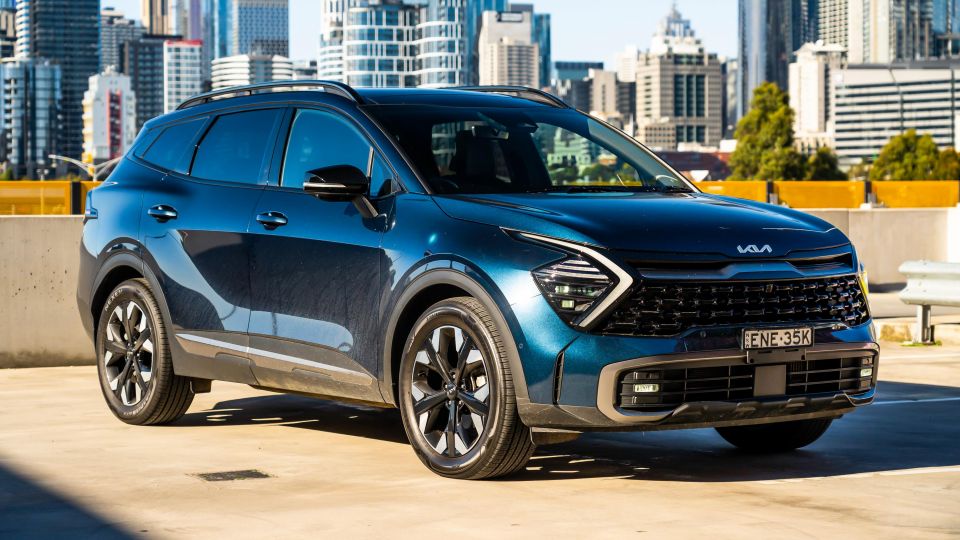


Quickly see how this car stacks up against its competition. Select any benchmark to see more details.
Where expert car reviews meet expert car buying – CarExpert gives you trusted advice, personalised service and real savings on your next new car.
The Kia Sportage has long been popular in Australia – and driving the GT-Line 2.0D AWD I can see why.
The Sportage competes with the likes of the Hyundai Tucson, Mazda CX-5, Mitsubishi Outlander, Nissan X-Trail and Toyota RAV4. It shares some of its bits with the Tucson; although, its cousin comfortably outsells the Sportage by over 5500 units, based on VFACTS figures from January to November 2023.
The Sportage possesses a lot of great features but does Kia miss the mark on attention to detail? Little things that could make a big difference in practicality seem to be overlooked. For a family flagship SUV the lack of rear window shades, climate controls in the second row, engine stop/start functionality and head-up display surely must combine to affect the vehicle’s score…
Let’s get into it and see.
The flagship Kia Sportage GT-Line Diesel is priced from $52,720 before on-road costs.

This puts it closely in line with the Mitsubishi Outlander Exceed AWD, Honda CR-V VTi L AWD and cousin Hyundai Tucson Highlander N Line AWD.
It’s worth mentioning that while Kia is yet to release the Sportage Hybrid – due here in 2024 – the GT Line Diesel competes on pricing with the Honda ZR-V e:HEV LX and Subaru Forester Hybrid S.
2024 Kia Sportage pricing:
Smartstream G2.0 FWD
Smartstream G1.6 T-GDI AWD
Smartstream D2.0 AWD
All pries exclude on-road costs.
To see how the Sportage compares with its rivals, line it up side-by-side with any car you want using our comparison tool.
Being the top-spec model, Kia has put about every feature possible inside the cabin. Let’s start with the seats.
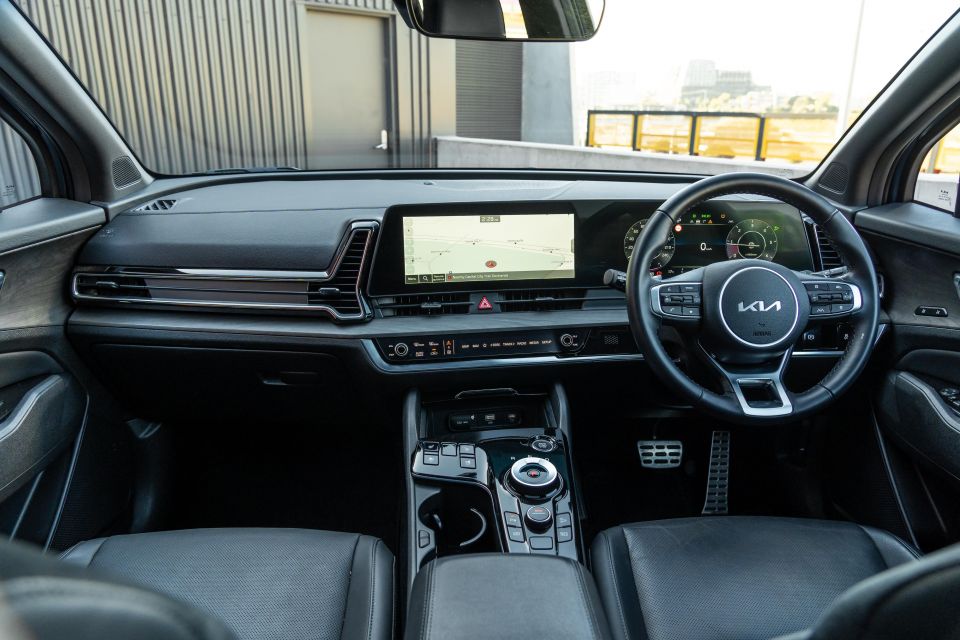
The Sportage’s seats appear decent quality and are highly adjustable but for me the seats are most comfortable when the lumbar support is not engaged. I guess this defeats the purpose, but almost every time I’ve driven the GT-Line my experience remains the same.
Seat heating and ventilation are nice features, and it sets a luxurious tone to the car and does feel special over the SX+, which only offers heated seating.
There is a combination of suede and leather upholstery in the GT-Line which, if I’m being honest, I didn’t even notice at first – I don’t think it makes a major difference to the car and perhaps this was Kia trying to separate this model from the SX+. To me at least, it fell on deaf ears – or blind eyes in this case.
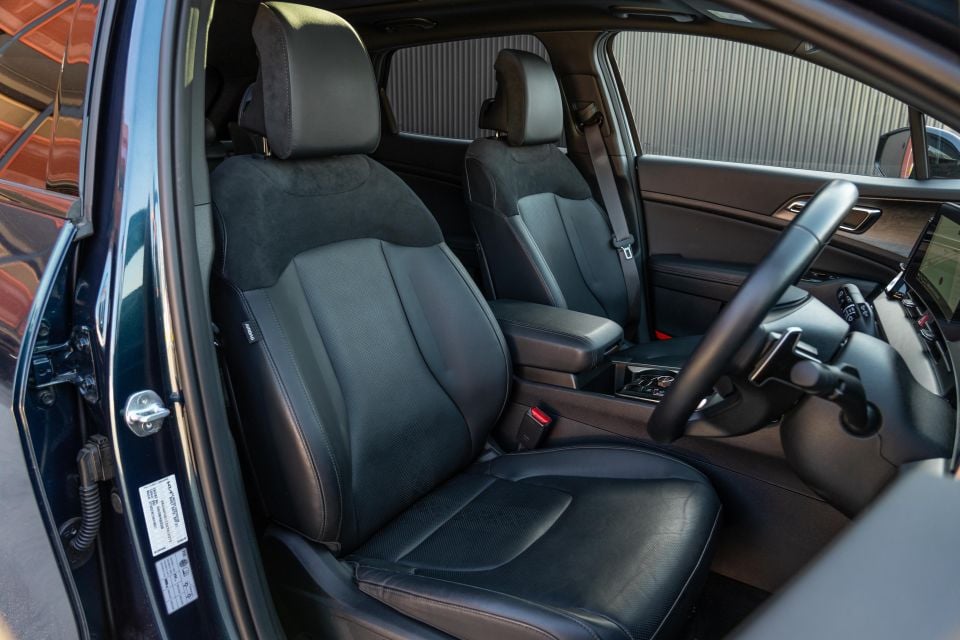

There are dual 12.3-inch infotainment and instrument cluster displays which are housed in a curved casing. It does feel more luxurious than what I would expect from a Kia, so points for that. Remembering the car is less than $60,000 before on-road costs, this type of instrument setup is something I’d expect to see in a BMW or Mercedes-Benz.
Under the air vents and woodgrain insert is a touchscreen to control climate and infotainment settings like media and navigation. Amongst the controls there is a small button that will select whether climate or infotainment settings are displayed, but to me it was a little too small and fiddly in operation.
I found while driving I often accidentally pressed the wrong button because the correct choice was nestled in between a variety of other virtual buttons. It’s not ideal to take your eyes off the road for any amount of time, let alone constantly moving them across rows of infotainment controls – at times I found operating these controls a little unnerving.
Two dials are located on either side of the button display, and these controls can change multiple settings, depending on which main controls are selected i.e. temperature or volume controls.
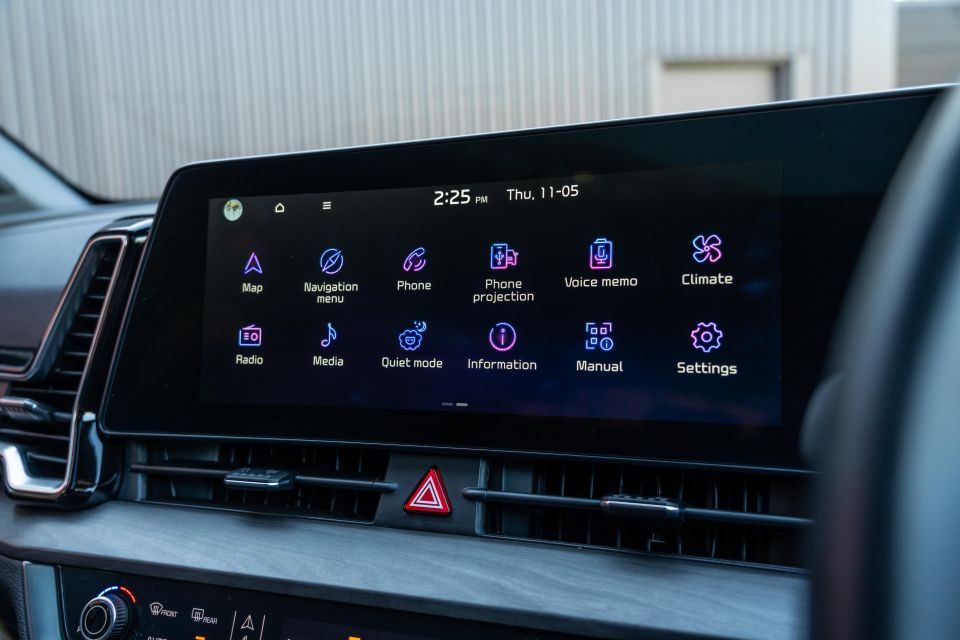
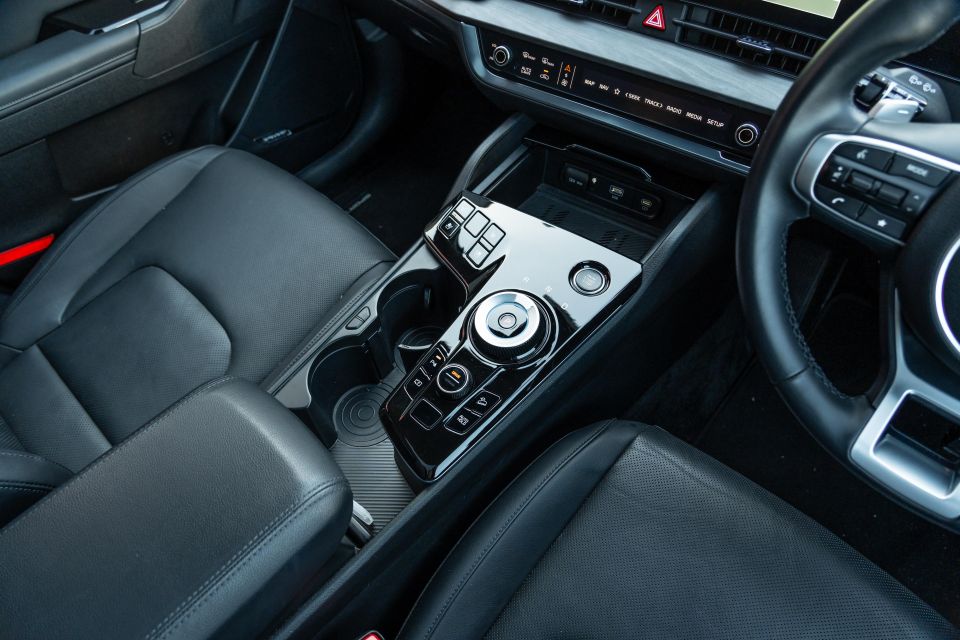
I should mention that I am fairly small, so I had to lean forward from my driving position to reach the infotainment system each time I wanted to make an adjustment. While I got used to this after a while, I haven’t have this issue with competitors and it was a little annoying.
The centre console area features a wireless phone charger, two USB ports (including a USB-A and USB-C) as well as a 12V socket. I did find it redundant to have a wireless phone charger but wired phone mirroring, which meant my iPhone wouldn’t comfortably fit in the space and would shift around as I was driving.
The centre tunnel doesn’t feel crowded with buttons and offers the driver a good number of controls and settings to choose from.
I found the cup holders a little annoying, too. Kia offers a retractable semi-circle that forms the cup holder – which will stow away when they aren’t needed – so you can store other things like keys or a small wallet. Beware however, the compartment isn’t rubber-lined and can mean harder items can rattle about.
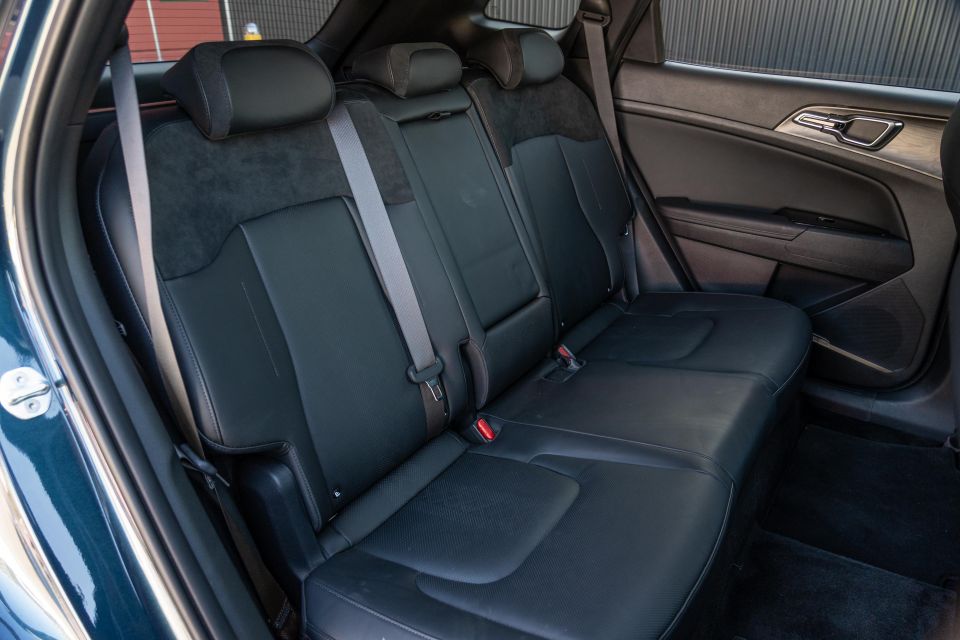

The back seats are some of the most spacious within the segment in regards to leg room. I was also able to fit three child seats across the second row; however I would suggest if you have young ones, use compact car seats especially when choosing baby capsules.
Speaking of kids, amenities in the second row features two air vents, hooks for small bags, USB-C ports, seatback pockets, and the centre seat reveals an armrest and two cup holders. There is one small drink bottle holder in each door bin and a large hanger on the headrest of the front seats.
The panoramic sunroof makes the car feel bigger and more spacious and proves to be quite entertaining for the kids at night, especially star gazing as you’re driving home.
The boot is very spacious, I was able to fit a single pram alongside four or five bags of groceries. A full-size spare tyre is kept underneath the boot floor. Quoted volume is 543L-1829L (VDA).
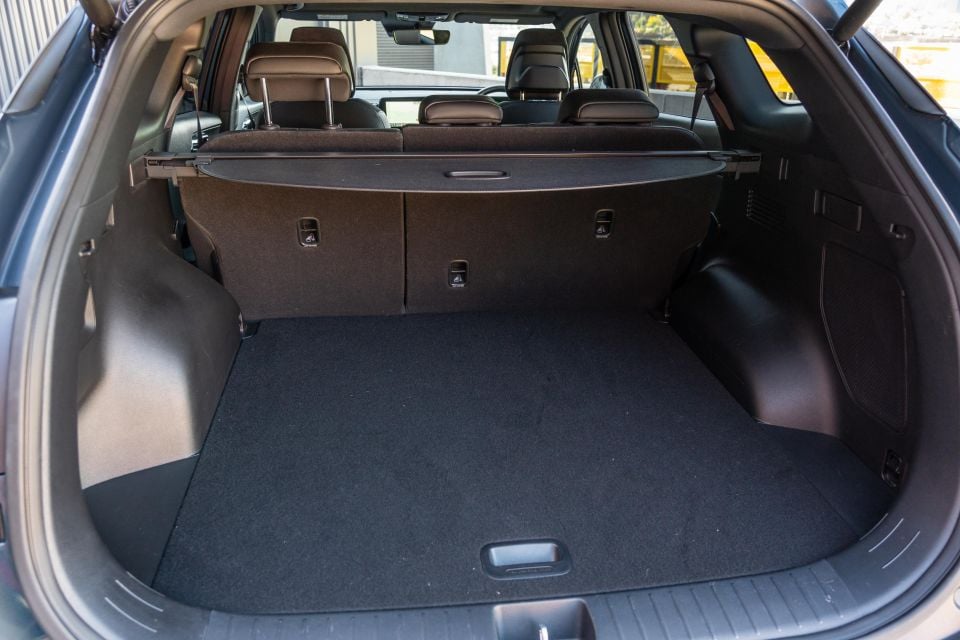
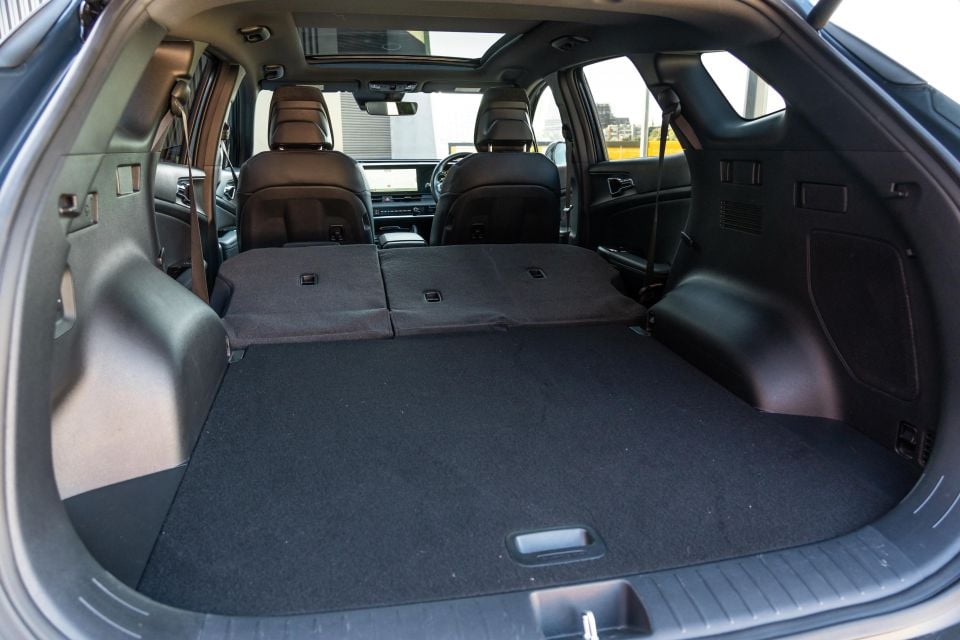
I found loading things into the boot was easy because the boot height was around hip height. This made it easy to get prams, groceries etc. into the car without strain.
Although Kia could improve on little details like window shades, a heated steering wheel, a head-up display and tri-zone climate control; the cabin as a whole has a lot to offer.
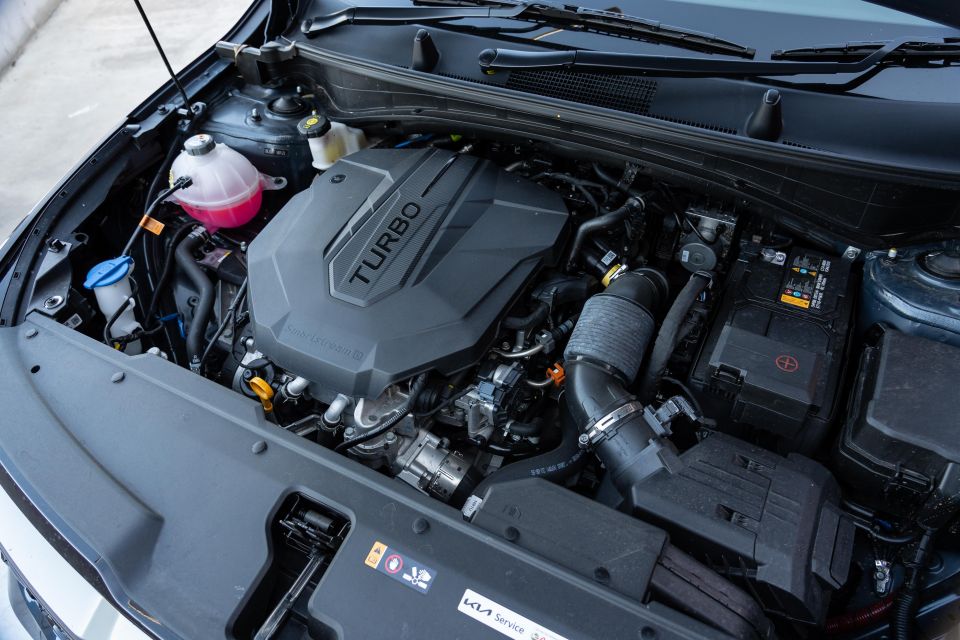
| Model | Kia Sportage 2.0D AWD |
|---|---|
| Power | 137kW (4000rpm) |
| Torque | 416Nm (2000-2750pm) |
| Transmission | 8-speed automatic |
| Driven Wheels | All-wheel drive |
| Weight | 1759kg (kerb) |
| Fuel economy (claimed) | 6.3L/100km |
| Fuel economy (as tested) | 7.3L/100km |
| Fuel tank | 54L |
It’s worth mentioning that while the combined fuel economy was 6.3L, the urban claim was 7.7L/100km. I thought the 7.3L/100km I achieved was fair considering I was doing mostly city driving.
The first thing I realised is the seating position and transmission shifter felt a little awkward, and took quite a bit of adjusting.
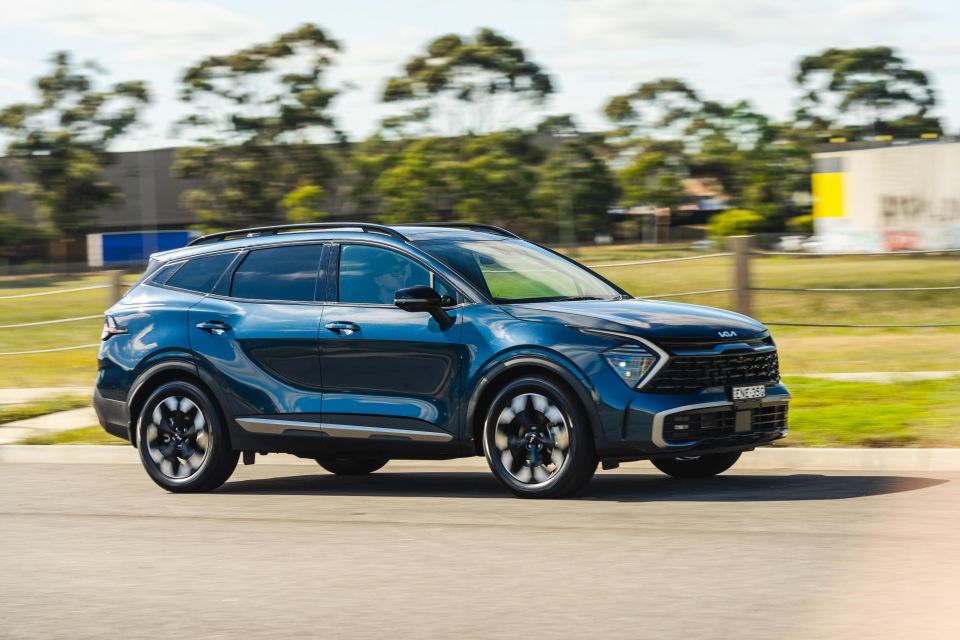
It’s not uncomfortable but I did find it took some getting used to – and that was before I even turned the car on. Eventually I got things sorted and hit the road.
The diesel engine felt smooth to drive once you’re off the line. You rarely have to put your foot all the way down from a traffic light but in the cases where I needed to have a better chance of merging, I found the car lagged off the mark a little more than I would have liked.
The Sportage feels solid and confident on highways though, and is just as capable on the school run or weekend sport.
I found after consistently driving the GT-Line I became very reliant on the Blind Spot View Monitor cameras which project a live side camera feed into the instrument cluster when you indicate. Although it’s a “luxury” gimmick it did make me stop and think how it encourages lazy driving behaviour.

Drivers shouldn’t be reliant on cameras around the car to simply change lanes or pull out of a car park. Rather than assist, the tech becomes a piece of technology drivers become dependent upon – and that doesn’t sit well with me.
The Sportage GT-Line has an auto-hold function. In stop-start traffic it’s an important feature for me and I’m glad Kia has it working smoothly.
Speaking of stop-start driving – Kia still doesn’t offer fuel-saving idle start/stop technology on the bulk of its Australian range. It’s a shame, given these cars will likely spend a lot of their time in town.
There are a few drive modes available in the Sportage. I found driving in Eco or Normal to be the picks, and found them very responsive.
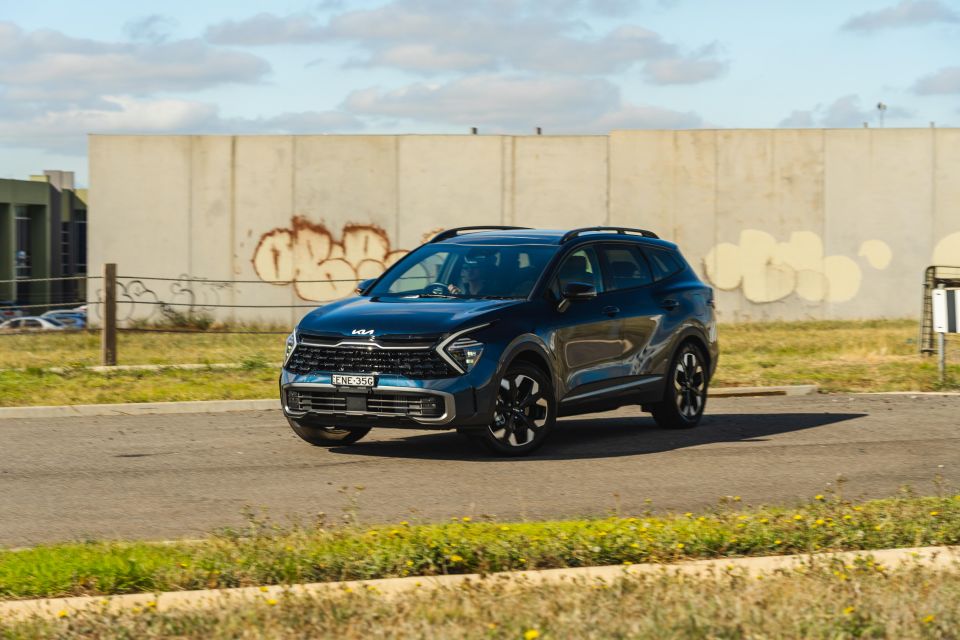
Some of the safety features can be a little intrusive and aggressive. I found the lane-keep assist disruptive – sometimes it would aggressively pull you in or out of a lane even when I had my indicator on.
The adaptive cruise control was responsive and not at all clunky. It works a lot better than in other SUVs, particularly Chinese-branded rivals.
The Sportage thankfully doesn’t have the annoying speed limit alert, which was a big turn-off in Kia’s newer models like the Seltos. The 360-degree camera is great when getting out of tight parking spots or making sure there aren’t any kids bikes (or kids for that matter) in the way when you’re reversing out of the driveway.
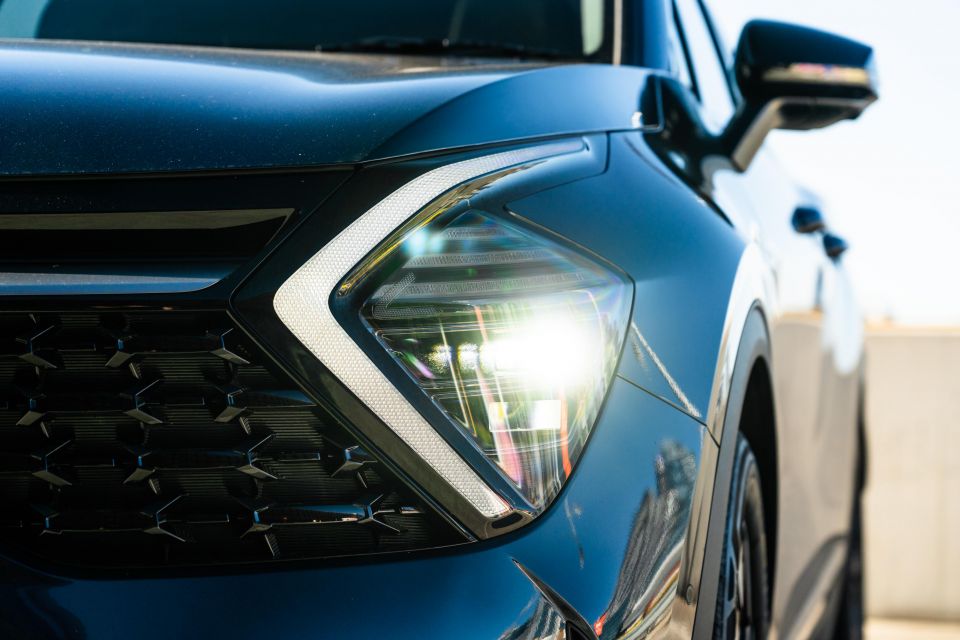

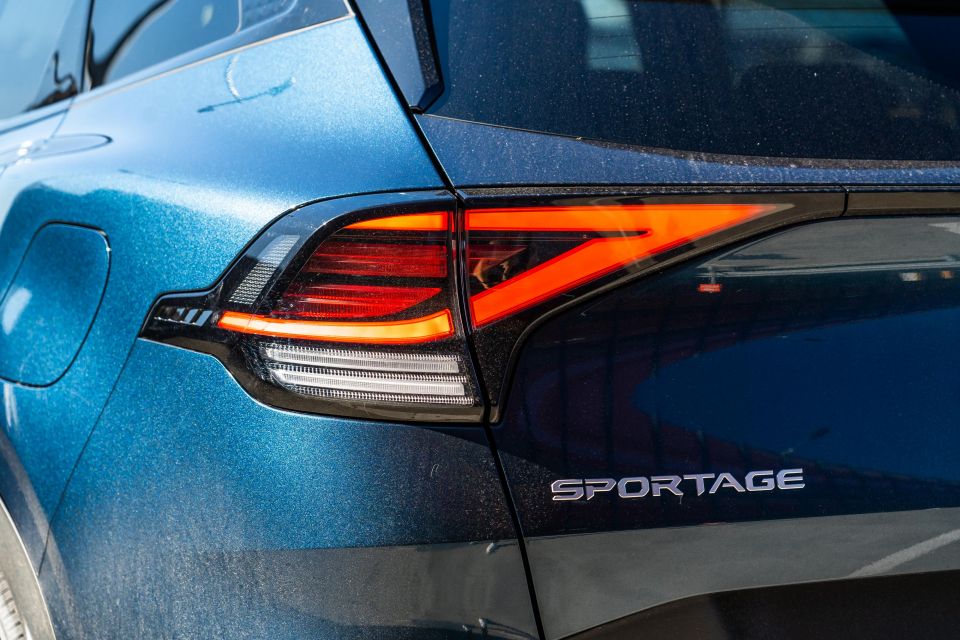

Sportage S highlights:
**not available for manual variants
Sportage SX adds:
Sportage SX+ adds:
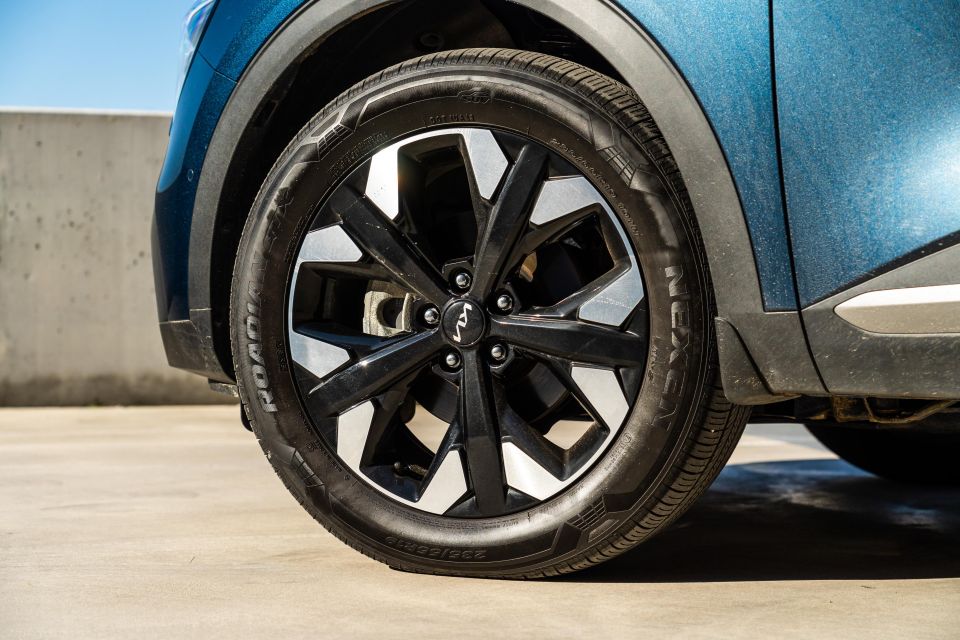

Sportage GT-Line adds:
The Kia Sportage wears a five-star ANCAP safety rating based on tests by Euro NCAP in July 2022.
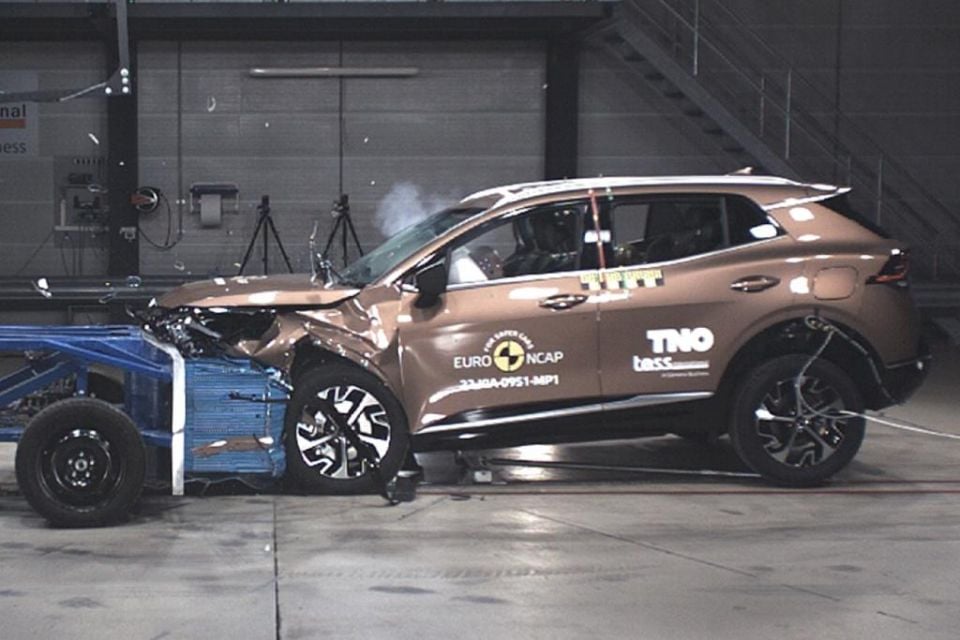
Where expert car reviews meet expert car buying – CarExpert gives you trusted advice, personalised service and real savings on your next new car.
It scored 87 per cent for adult occupant protection, 87 per cent for child occupant protection, 66 per cent for vulnerable road user protection, and 74 per cent for safety assist.
Standard safety equipment includes:
Sportage GT-Line adds:
All Kia models are backed by a seven-year, unlimited-kilometre warranty with seven years of capped-price servicing.

The first seven services for the 2.0L turbo diesel models are $346, $537, $416, $790, $389, $675, and $412.
I think the Sportage is a great car for parents who are slowly growing their family. It’s fun, it’s modern and will give you features traditionally available in expensive luxury European cars.
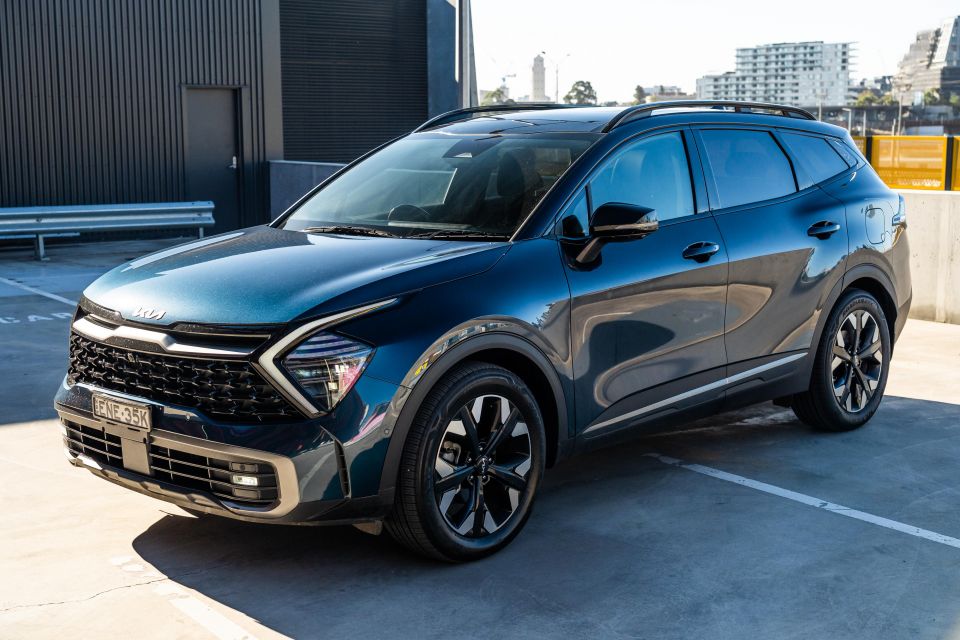
It’s good value for money if you are comparing with the Nissan X-Trail, Toyota RAV4, Mazda CX-5, and its cousin the Hyundai Tucson; which all ask a couple of thousand dollars more for their respective flagship versions.
The Sportage GT-Line has a few features that deduct points for practicality, but with the amount of tech and gear it had for under $60,000 it’s one of the better SUVs in the segment. I don’t know if waiting six months or more for this car is justified however; especially when there was no stop-start technology or hybridisation.
I would consider test driving other models that may offer a stop-start function to reduce fuel consumption, or perhaps wait for the Sportage Hybrid which is due to arrive in Australia sometime in the early stages of 2024.
The GT-Line does at least tick a lot of boxes and should definitely be short-listed. Closely check the features list; though, as perhaps the devil is in the detail.

Click the images for the full gallery
BUY: Kia Sportage MORE: Everything Kia Sportage
Where expert car reviews meet expert car buying – CarExpert gives you trusted advice, personalised service and real savings on your next new car.
Jade Credentino is an automotive journalist currently based in Melbourne, Australia. Jade has had a chance to review a variety of vehicles and particularly enjoys SUVs. She enjoys traveling and going on road trips exploring Australia.


Max Davies
20 Days Ago


Andrew Maclean
8 Days Ago
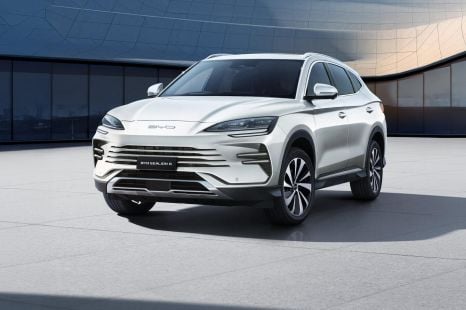

William Stopford
6 Days Ago


James Wong
5 Days Ago
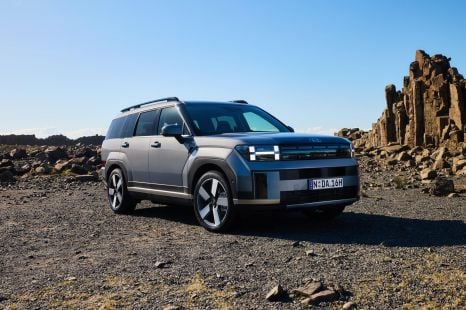

Damion Smy
4 Days Ago
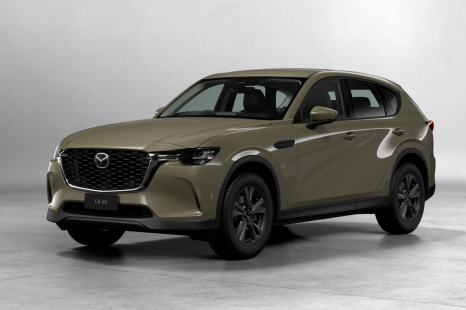

James Wong
3 Days Ago